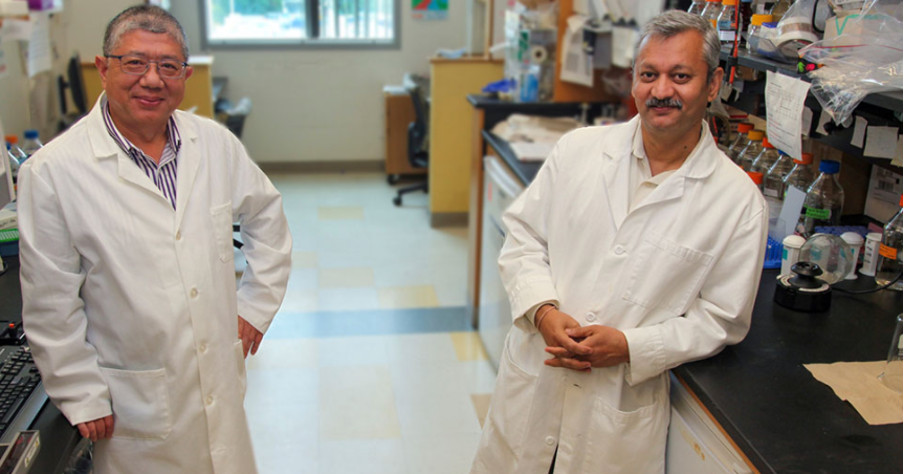Longevity market blockbuster? Senolytic drug development is attracting investor interest

By killing so-called zombie cells which accelerate the ageing process, drugs called senolytics promise to keep us younger and fitter for longer.
It’s the glittering prize of Longevity research: a simple treatment which can push back ageing. Many companies in the longevity sector feel they’ve hit upon a possible answer in the form of senolytics – and it’s a growing market, set to hit nearly $650 million by 2023.
Silicon Valley is waking up to Longevity and Senolytics. Last week, Rubedo Life Sciences closed a $12m seed round for a proprietary drug discovery platform that targets Senolytics. Rubedo’s round included participation from Longevity Fund, Refactor Capital, AGE1 and Shanda, as well as additional investors.
Senescent cells are one of the hallmarks of the ageing process we all have to put up with. Rather than expiring naturally at the end of their life span, they become cellular zombies, hanging around, emitting dangerous toxins and encouraging other cells to join their zombie gang. They help to trigger the gradual deterioration of functional characteristics which progressively get worse the older we get.
The purpose of senolytic therapies is to find those zombie cells and selectively induce their death, thereby slowing the ageing process and helping us all live longer and more active lives. Instructing them when to stop is currently one of many research challenges.
Our understanding has evolved rapidly in recent times and took another step forward with a new clinical paper which suggests cellular senescence is a major determining factor for survival for certain cancer cases.
The paper found that women’s chances of surviving cervical cancer depended greatly on the level of 10 distinct proteins in their blood. These proteins are also found in the so-called zombie cell state, which is more correctly known as senescence.
The study found that women with low levels of these senescent proteins had higher survival rates than those who exhibit high levels.

These results suggest that senolytic therapy which hunts and kills these zombie cells could be effective at improving the prospects of patients. Lead author Dr Jin-Xiong She, who is Director of the MCG Center for Biotechnology and Genomic Medicine and founder of Augusta University’s spin-out Jinfiniti, said the paper’s key takeaways were that senescence should be managed to improve therapy and that by understanding the role that senescence-emitted proteins play we might be able to change how cancer cells respond to therapy.
It’s another positive step in the development of treatments against degenerative diseases and also the wider fight against ageing. Even so, there have been setbacks.
Recently one of the leading Senolytic therapy developers, UNITY Biotechnology, ditched research after disappointing results from its Phase 2 study of UBX0101, a p53/MDM2 interaction inhibitor. The study identified no statistically significant difference in pain reduction between the use of UBX0101 and a placebo.
The firm’s stock fell 48% on the news. However, such setbacks are nothing new in the longevity sector, especially among publicly traded companies which are a little more vulnerable to investor sentiment.
For every disappointment such as this, there are other trials showing progress. For example, LaTonya Hickson, MD, and her Mayo Clinic colleagues enjoyed better results with their phase one pilot study of dasatinib plus quercetin. They found that a three-day course decreased the number of senescent cells when administered to nine people with an age range of 55-79 years.
Another early stage study found supportive evidence that senolytics may alleviate physical dysfunction in idiopathic pulmonary fibrosis. Results showed a significant improvement in the distance patients were able to walk.
These results are only preliminary, and the entire sector remains in its infancy. However, just because it isn’t available to the public yet doesn’t diminish its potential. Investment is flowing and big pharma companies are getting in on the act.
Taisho Pharmaceutical and Insilico Medicine, for example, have entered into a research collaboration to identify novel therapeutics against ageing.
Companies are also experimenting with a variety of delivery mechanisms. Biotech start up OneSkin, for example, launched a topical application containing proprietary peptide, OS-01. Designed to reduce skin’s biological age. It aims to address two key areas: improving the health of skin by boosting the skin barrier and supporting repair to DNA damage; and preventing the accumulation of senescent cells. This increases epidermal thickness, improves skin structure and cell vitality. The overall effect is to keep skin looking healthy and young. The fact that senolytics have applications in the cosmetic skincare market will pique investors’ interest, as this market is projected to reach $185.5b by 2027.
Another study found that bathing organs in senolytics could eliminate senescent cells and reduce age-associated ageing in the organs of deceased elderly donors. The treatment has the potential to increase the supply of organs for donation by making it easier to use organs donated by older patients for transplant. Currently it is possible to use older organs, but their use is restricted by age-specific responses to injury and high immunogenicity. With transplant waiting lists showing no sign of getting shorter, this technique could result in tech that would be snapped up by hospitals and healthcare providers worldwide.
A host of other start-ups are currently looking for funding for projects related to senolytics. They are all competing for the enormous prizes on offer for whoever makes the first major breakthroughs. “The size of the return is huge,” explained Kevin Perrott, president of the Washington DC-based Global Healthspan Policy Institute. “If you’re able to bring anything like that to the market, you have something that’s universally needed.”
Research is still at an early stage, but the pot of gold at the end of the rainbow is huge. Progress so far raises the tantalising prospects of simple pills or other treatment you could take to push back the ageing process, keep yourself looking young and fight off all sorts of age-related debilitations. It’s not quite the fountain of eternal youth, but it could have profound implications for the future of ageing and the longevity sector, as well as investors who spot emerging success at the pipeline level.
Comments (0)